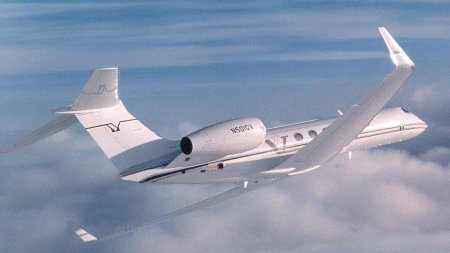Graham Warwick/WASHINGTON DC

Gulfstream will begin flight testing an enhanced vision system (EVS) low-visibility landing aid on a Gulfstream V business jet later this month.
The company plans to certificate the EVS on the GV by year-end, and on the GIV-SP later next year. Gulfstream believes it will be the first aircraft manufacturer to offer such a system.
The Gulfstream EVS consists of a Kollsman infrared camera in the nose linked to the aircraft's Honeywell/Marconi head-up display (HUD). The camera operates over a 1-5µm frequency range and covers the 1.2-2.2µm band, where runway lights put out the most energy, says senior experimental test pilot Gary Freeman.
EVS flight testing has been under way since October in a Cessna 402 operated by the Maryland Advanced Development Laboratory. The camera is being installed in a GV for proof-of-concept (PoC) flying scheduled to begin later this month.
Following the completion of PoC flying in October, Freeman says, Gulfstream plans to move into the certification phase. This will involve performing 100 approaches in the GV, 75 of them in low visibility, he says.
Gulfstream plans to certificate the EVS in two stages. In the first, the system will be certificated to allow approaches to Category 1-equipped runways in Cat 2 reduced visibility conditions. The HUD is approved for Cat 2 approaches to Cat 2/3-equipped runways.
"There are not many Cat 2/3 fields, so we need Cat 2/3 capability at Cat 1 fields," Freeman says. In the second phase, the EVS will be certificated for a decision height - the altitude at which the pilot must be able to see the runway unaided to continue the approach - reduced from 100ft (30m) to 50ft. "We have already done many blind landings in the 402," he says.
Freeman says the Gulfstream EVS will cost less than $500,000, excluding the HUD, which is priced at another $430,000. The camera is installed behind the radome, looking through a sapphire window.
Source: Flight International























